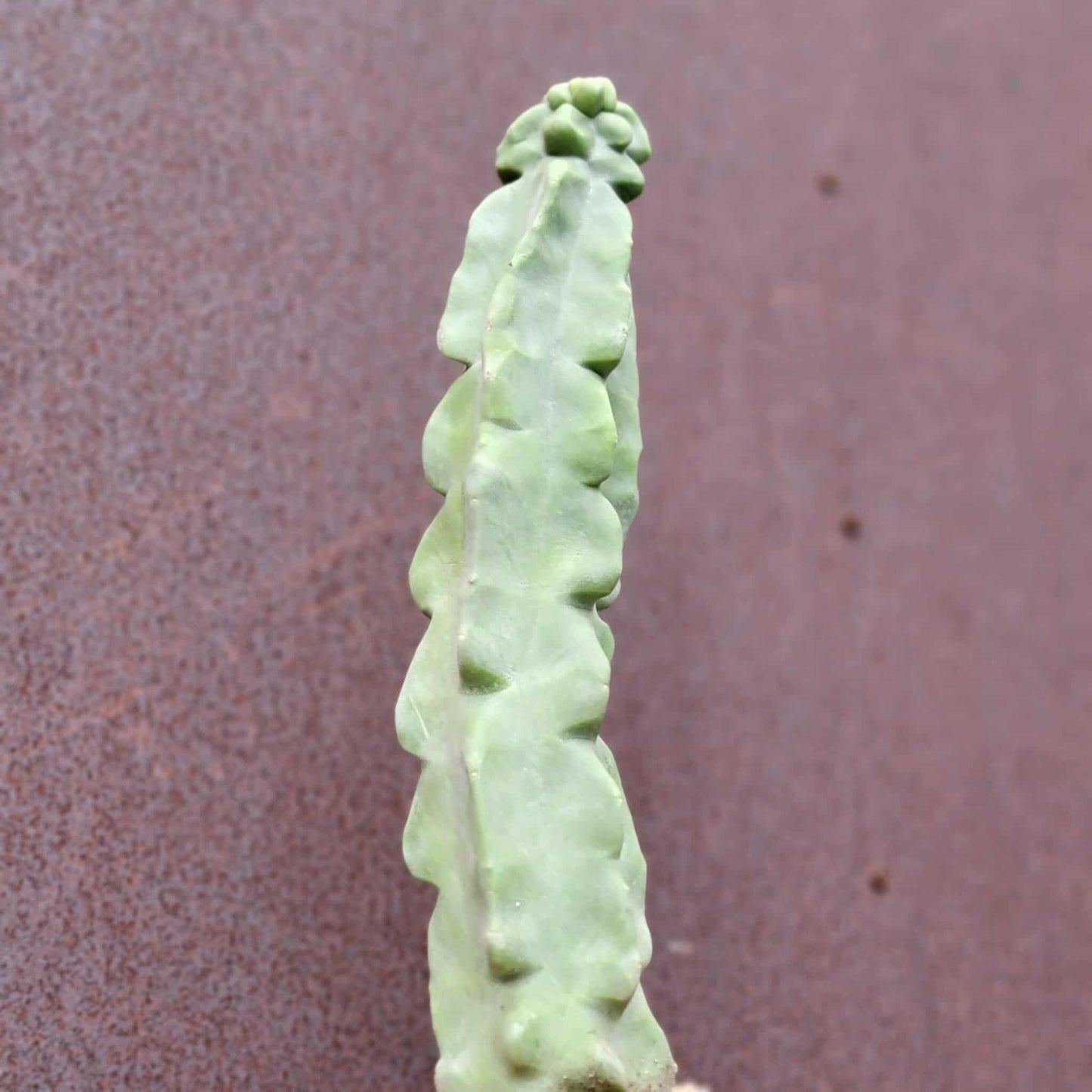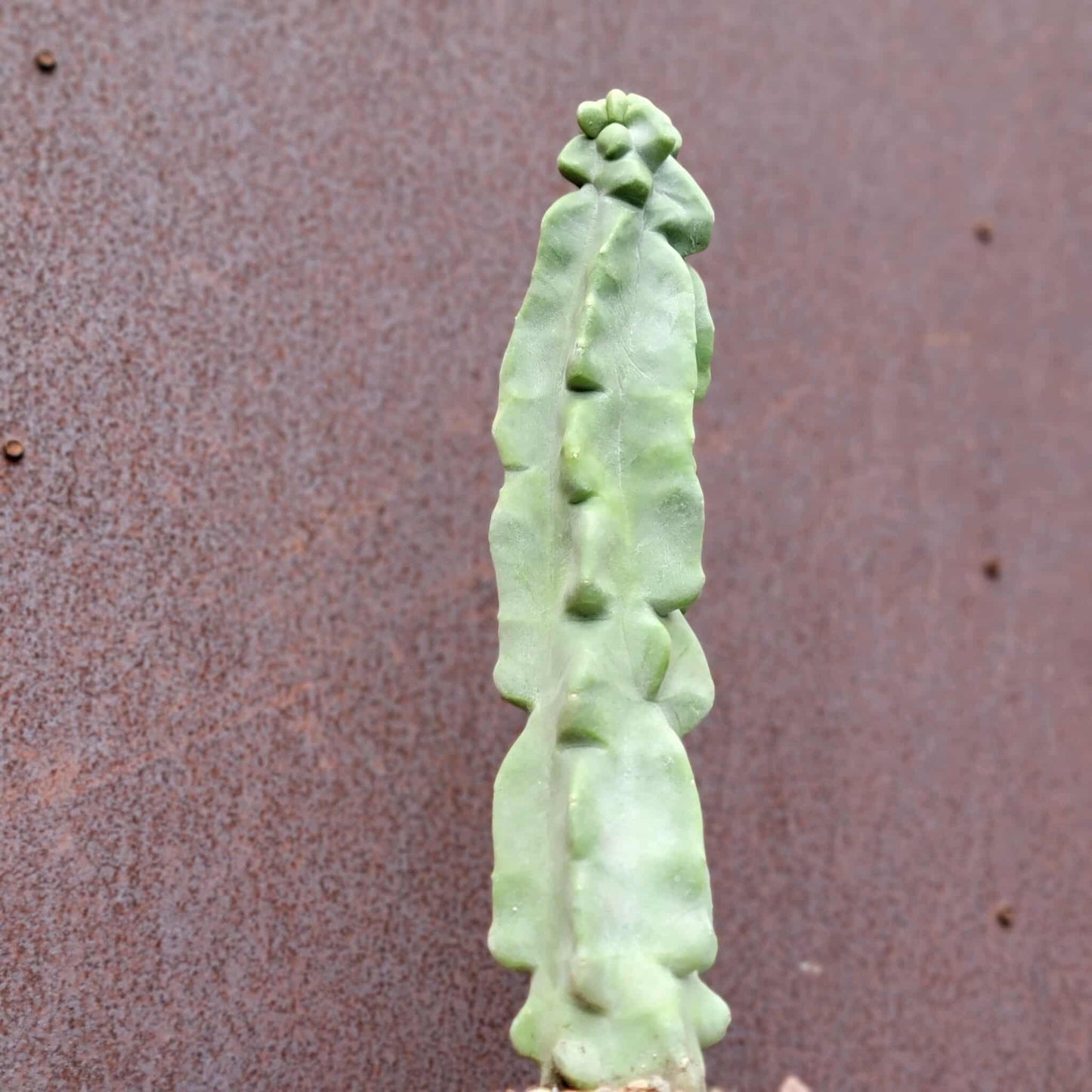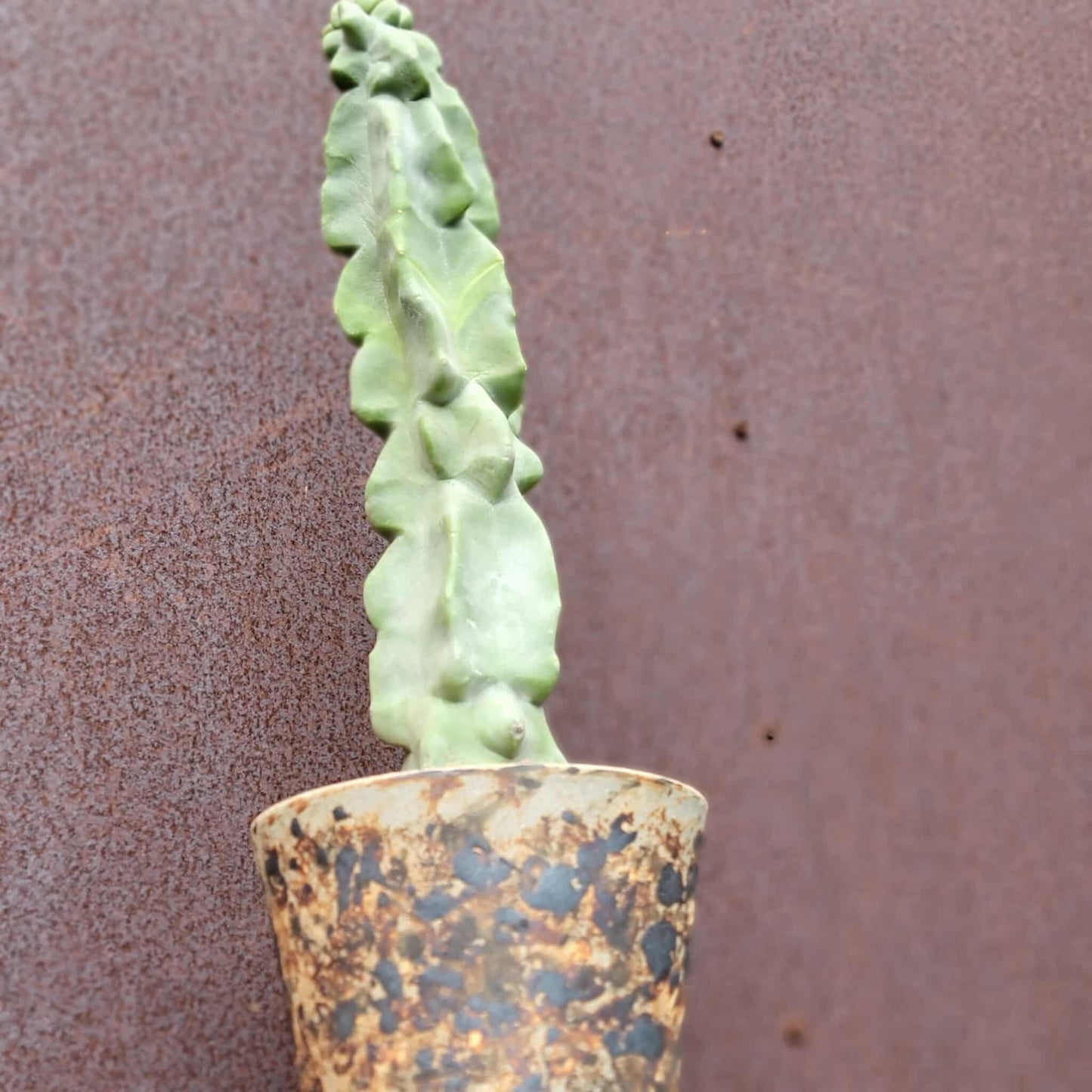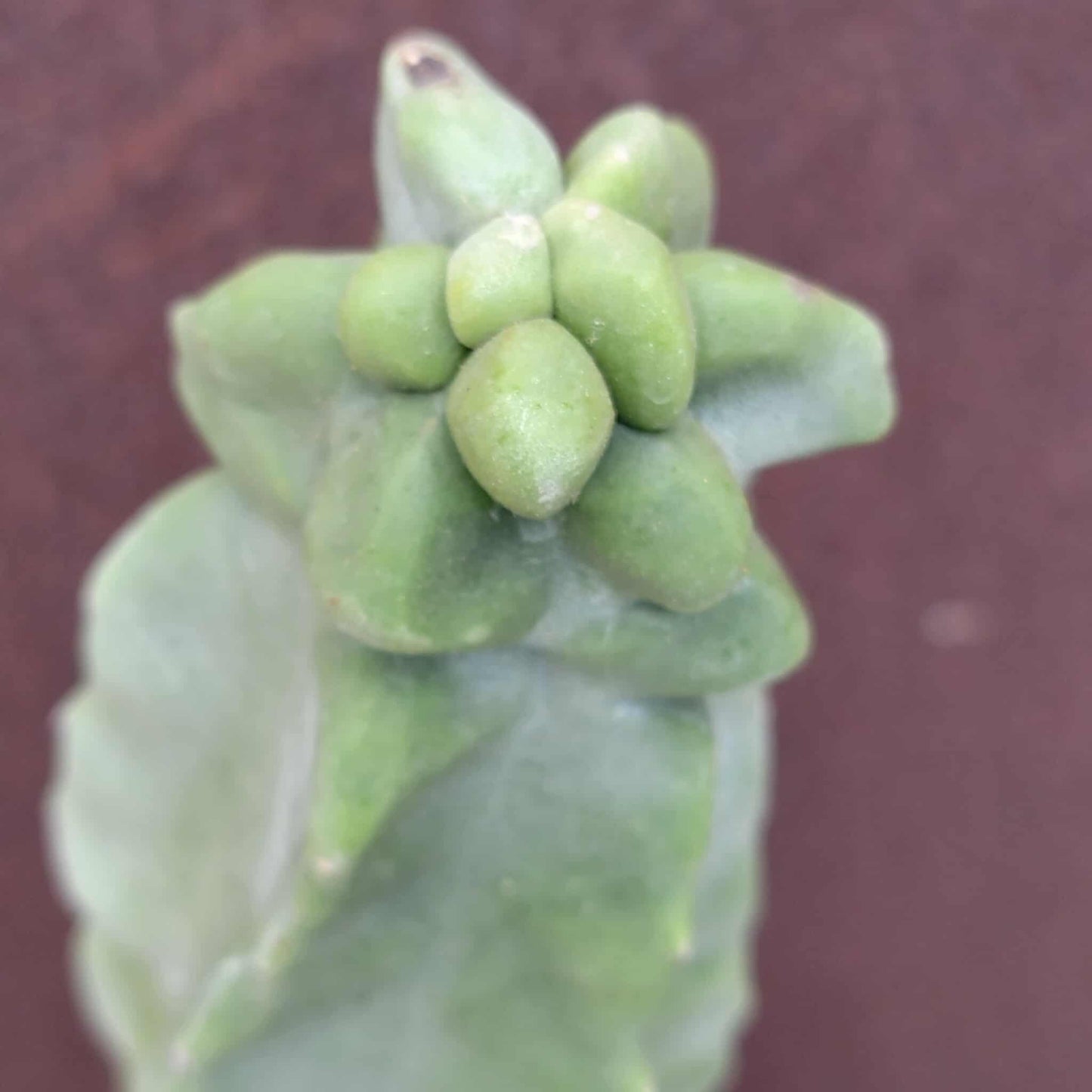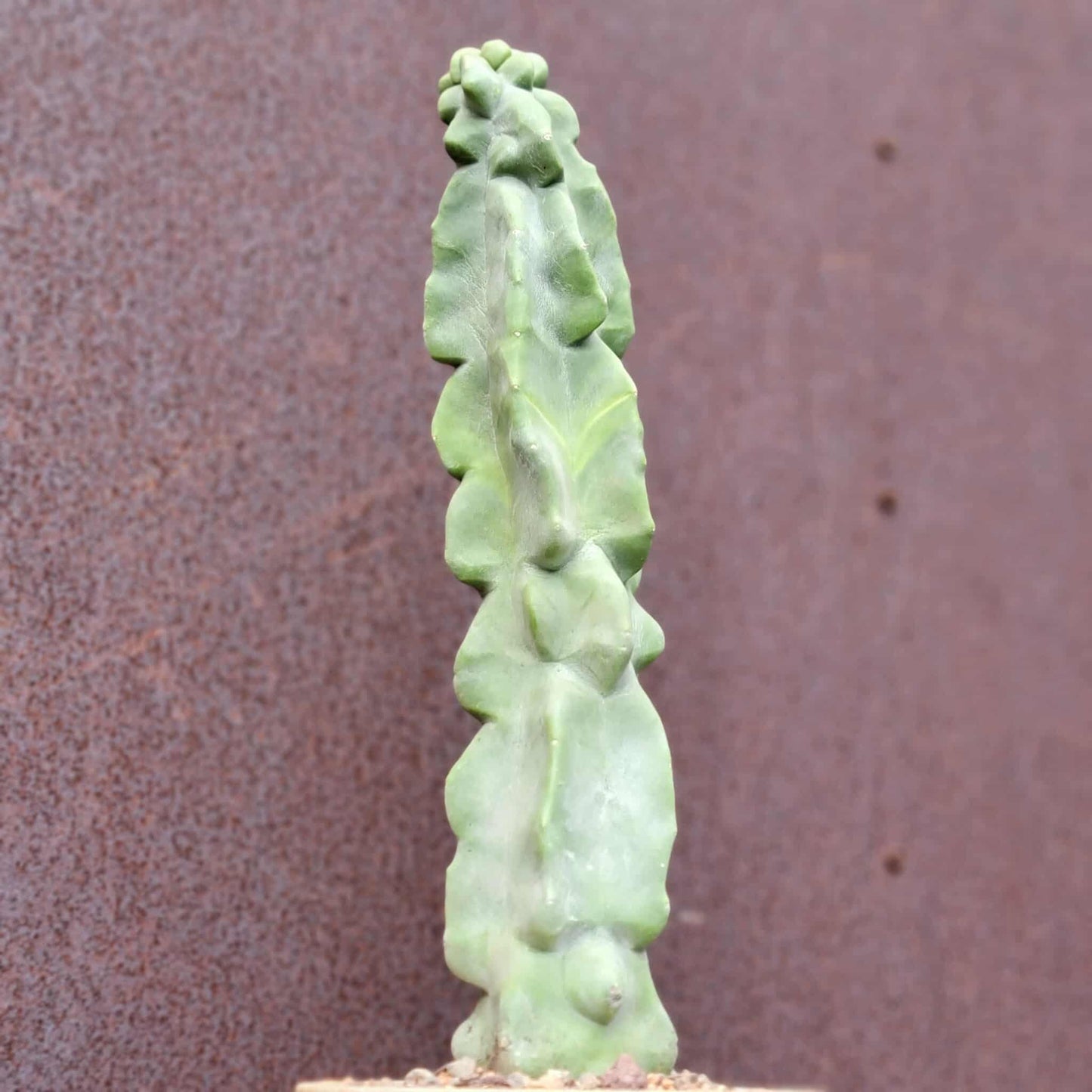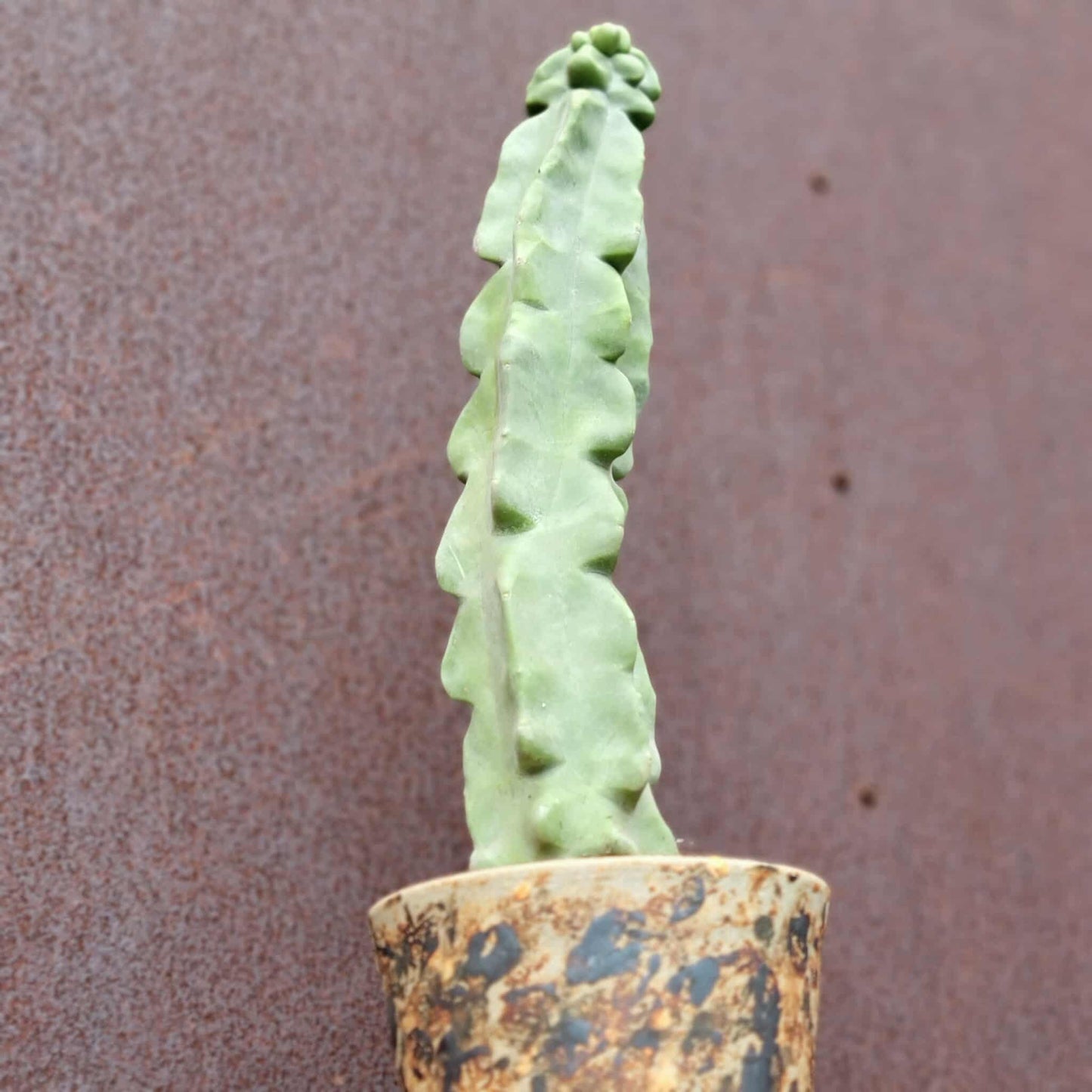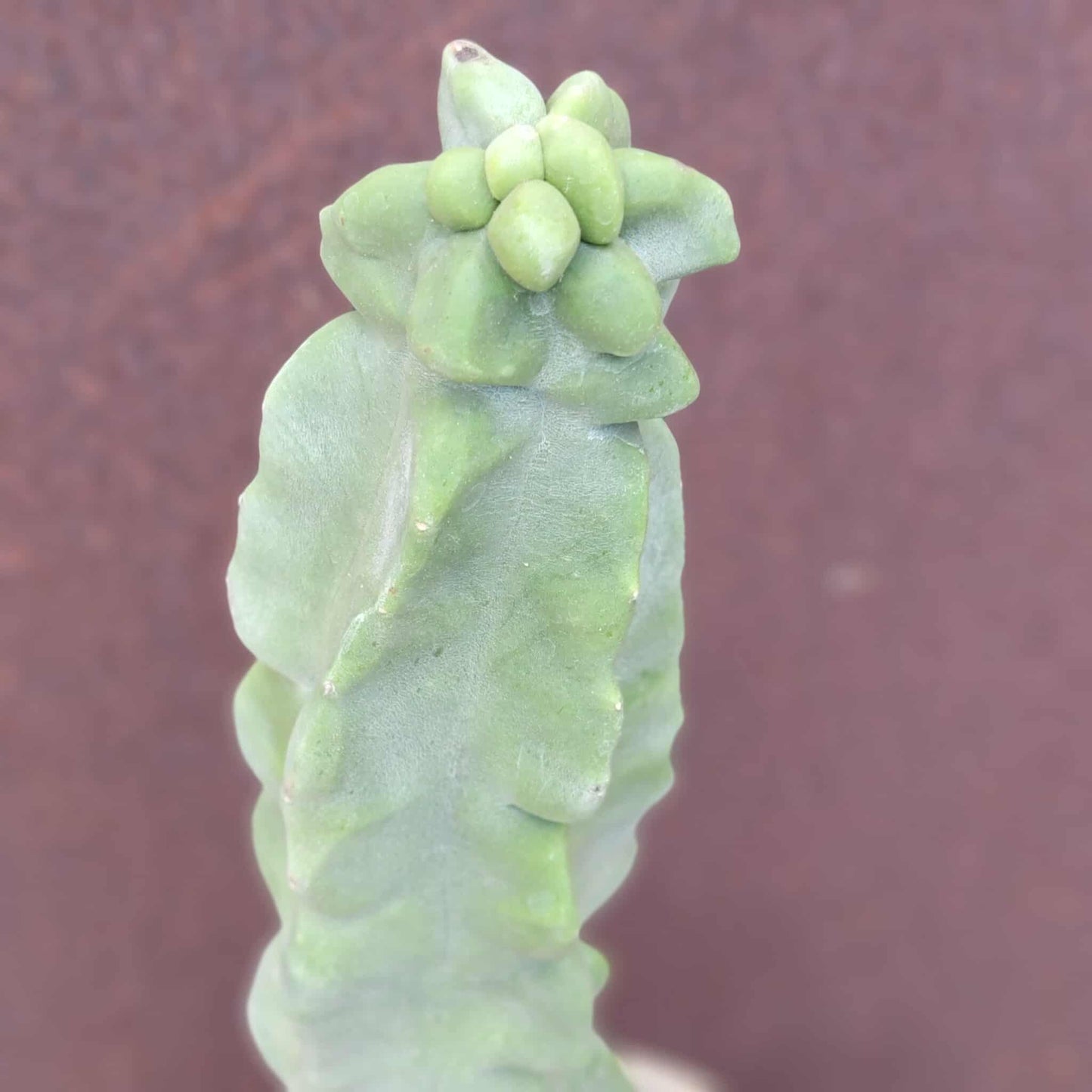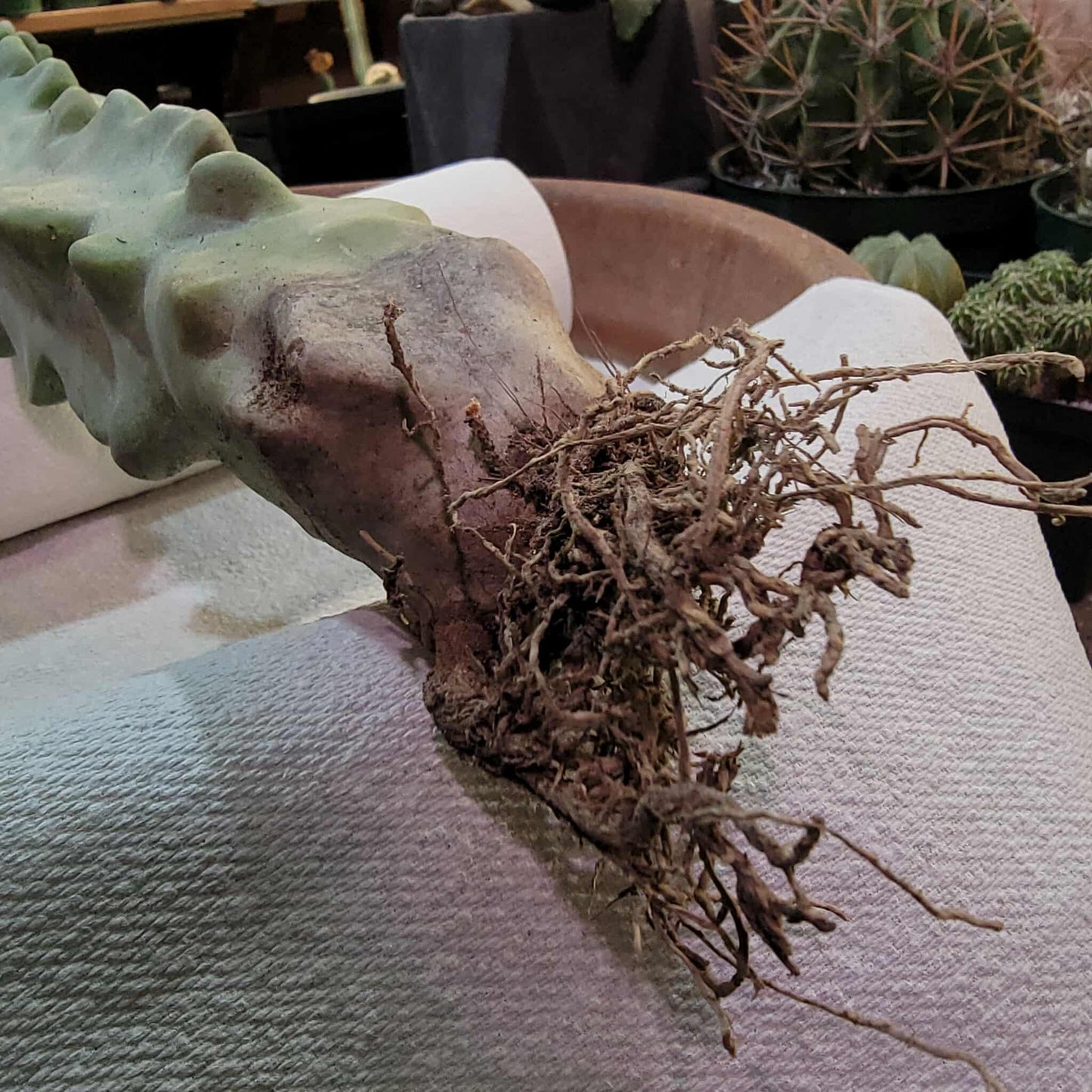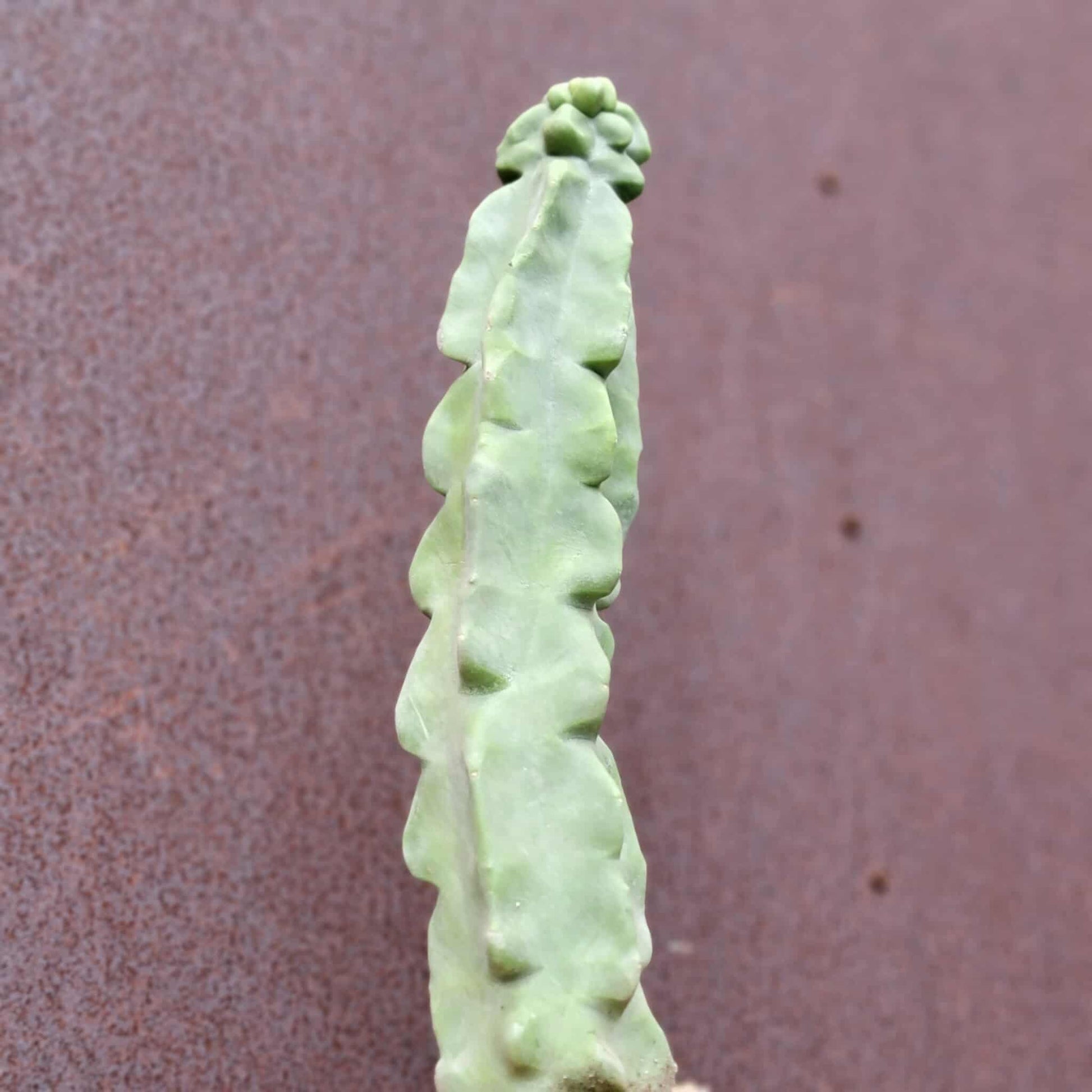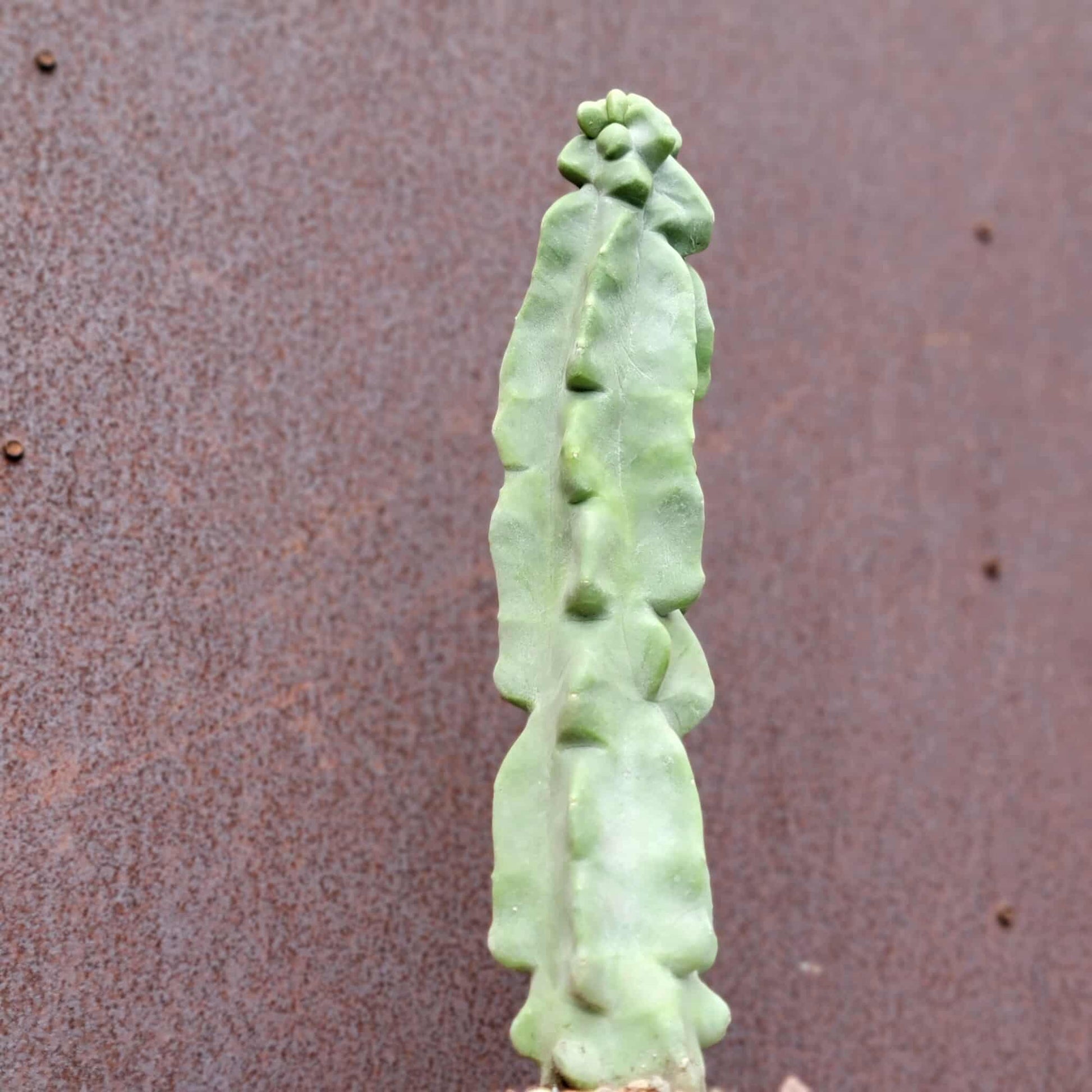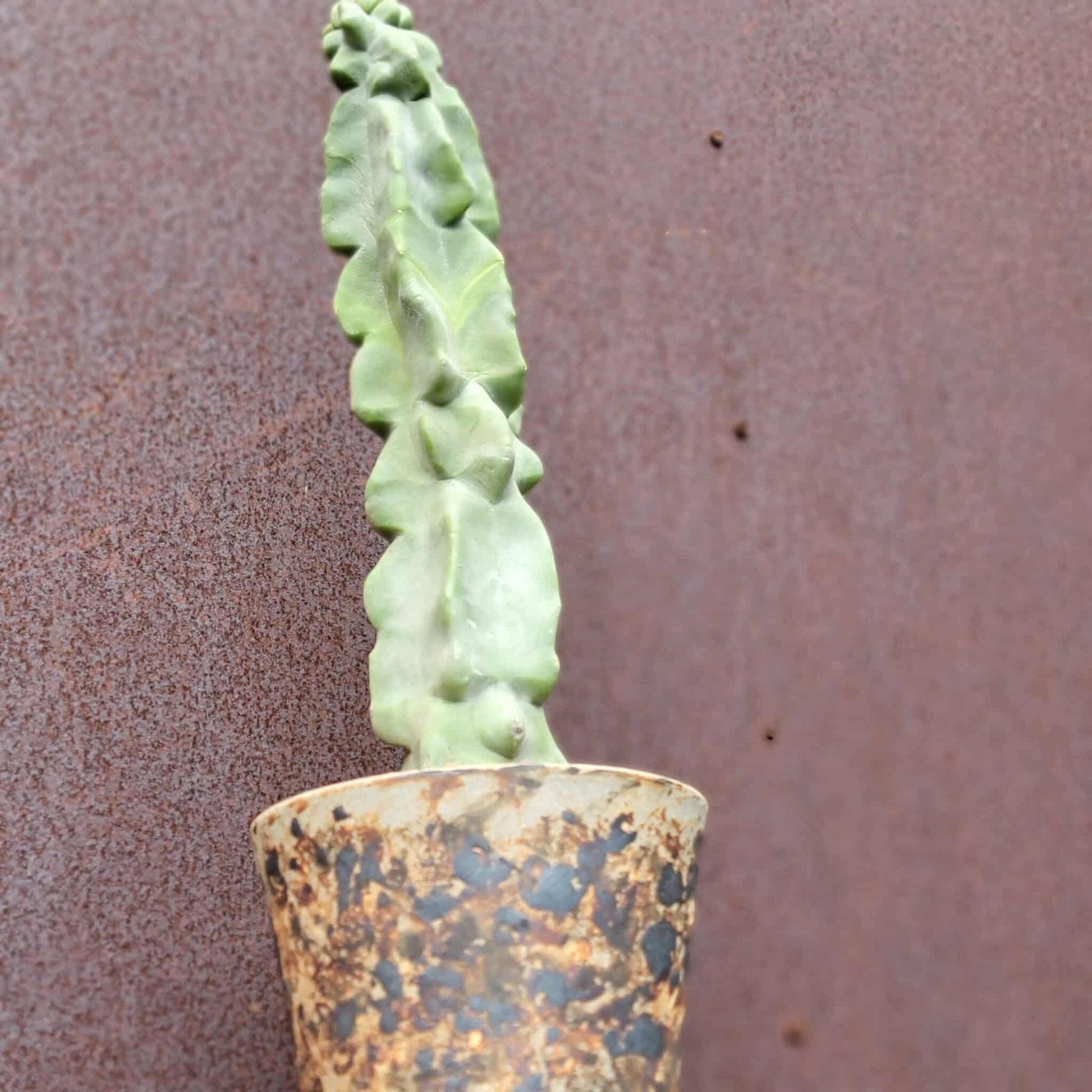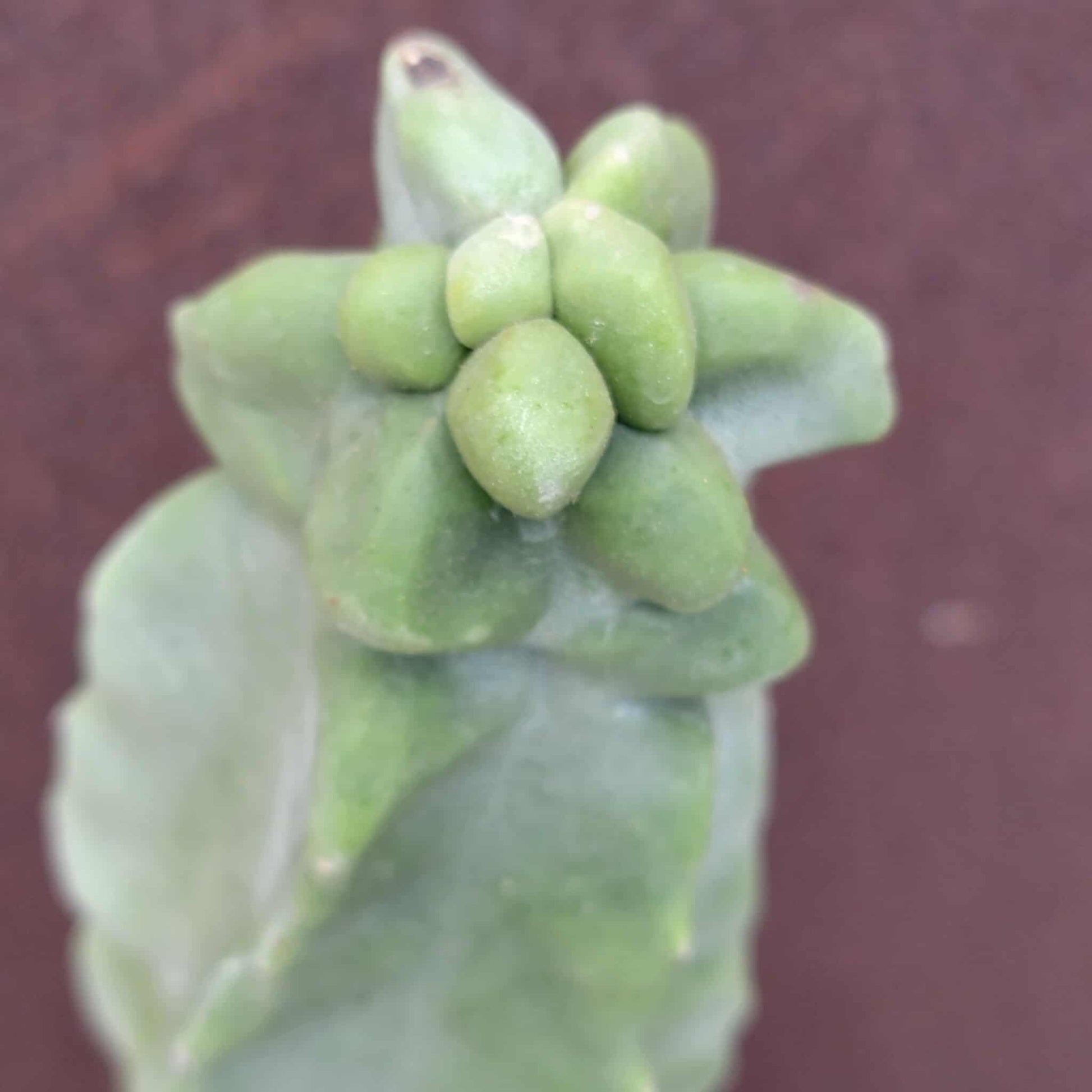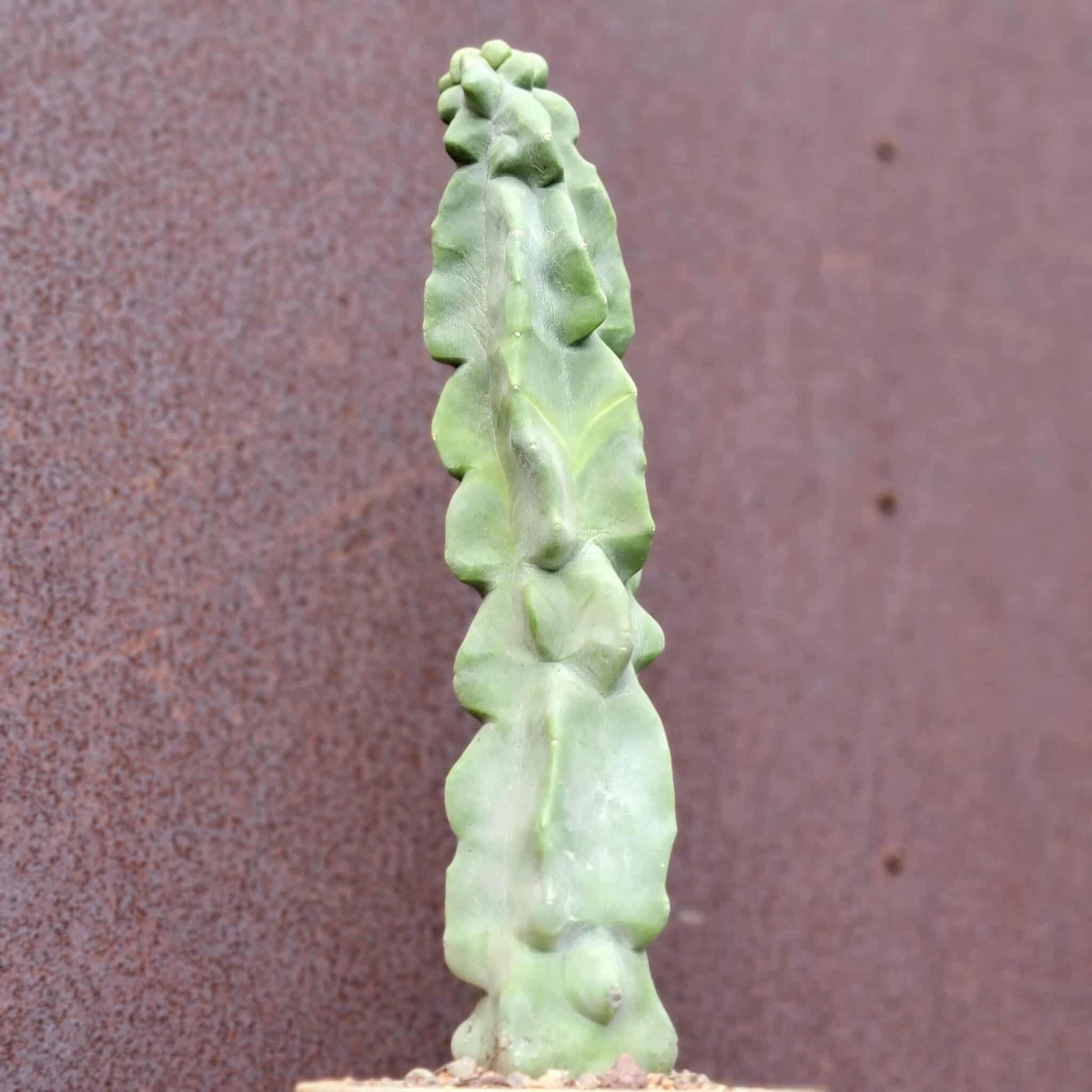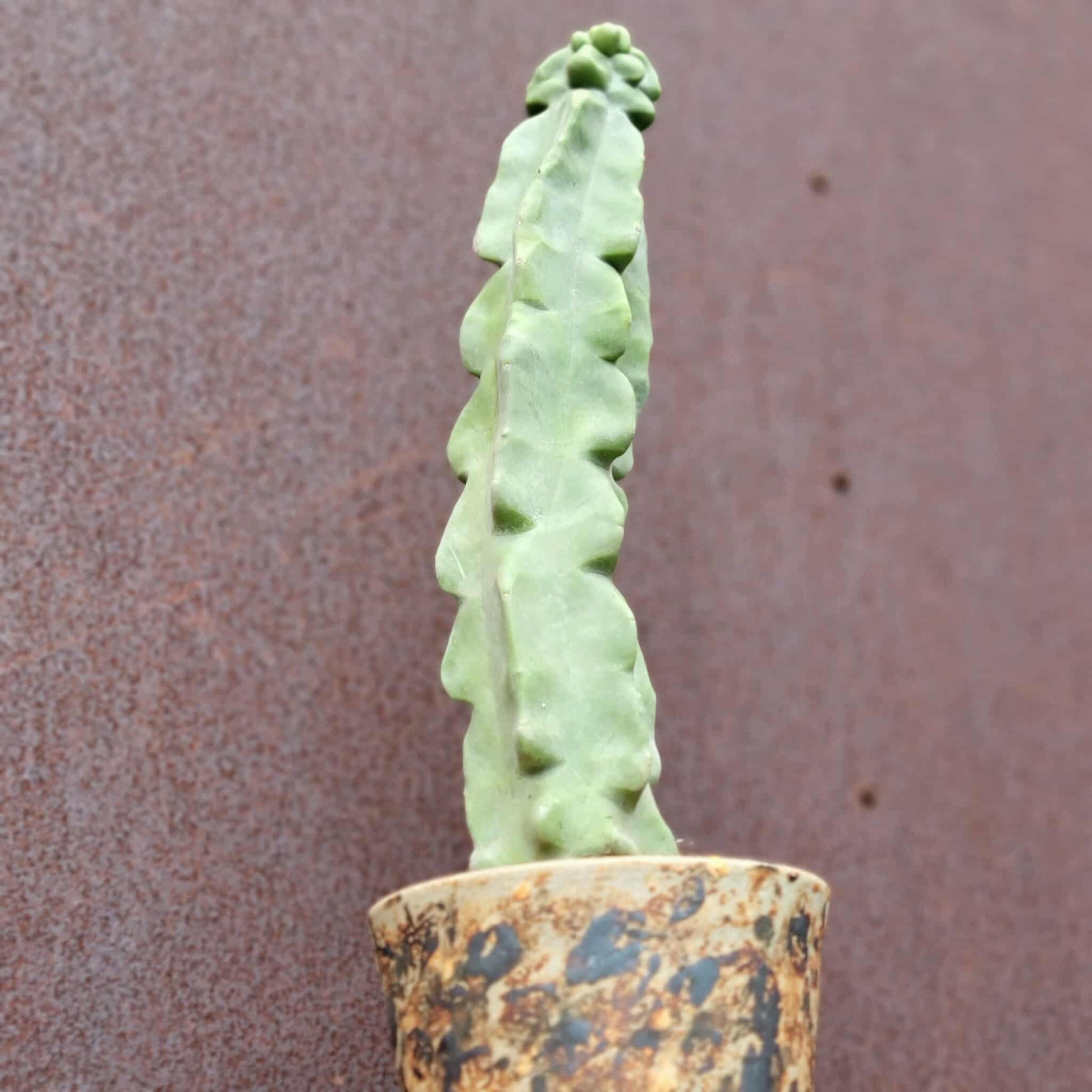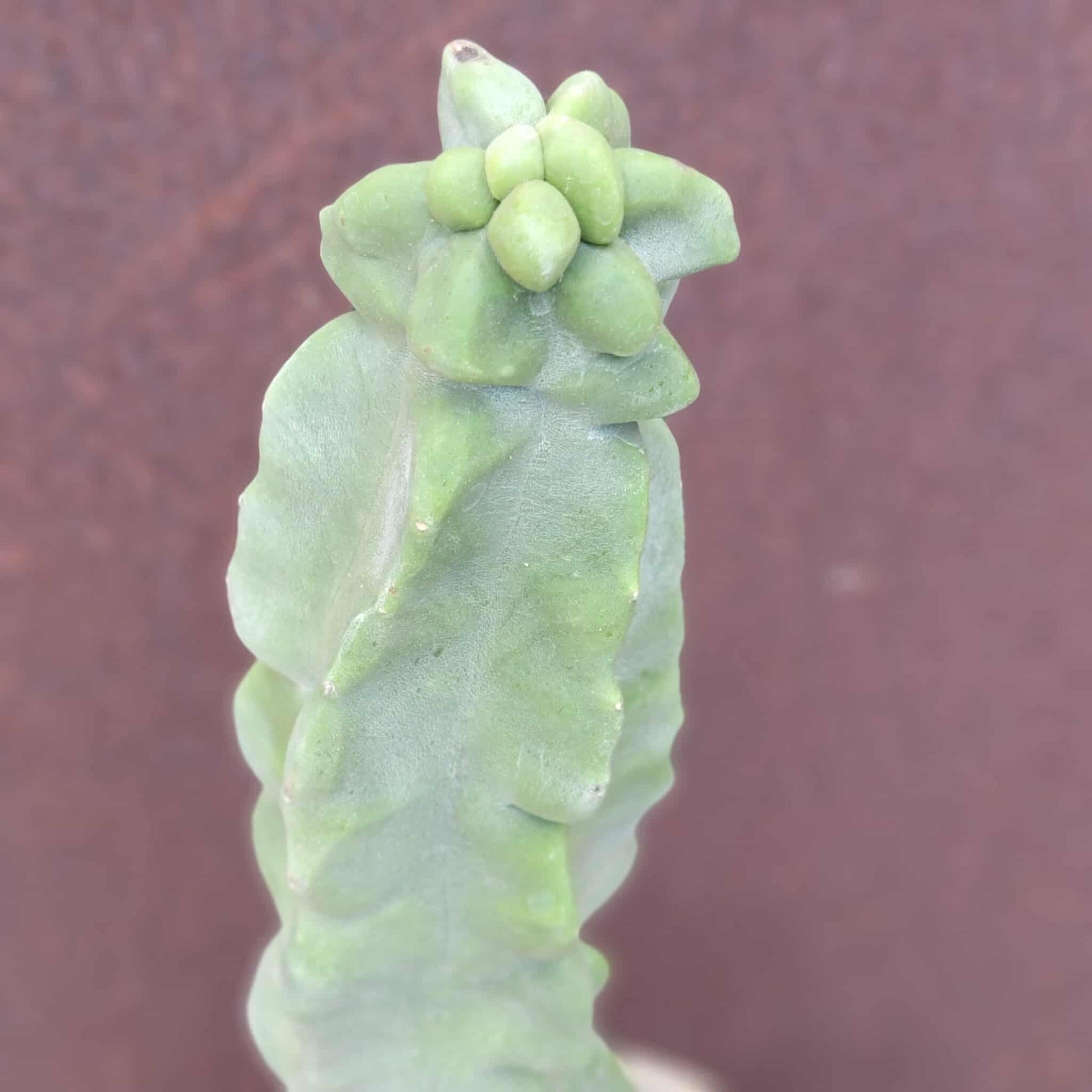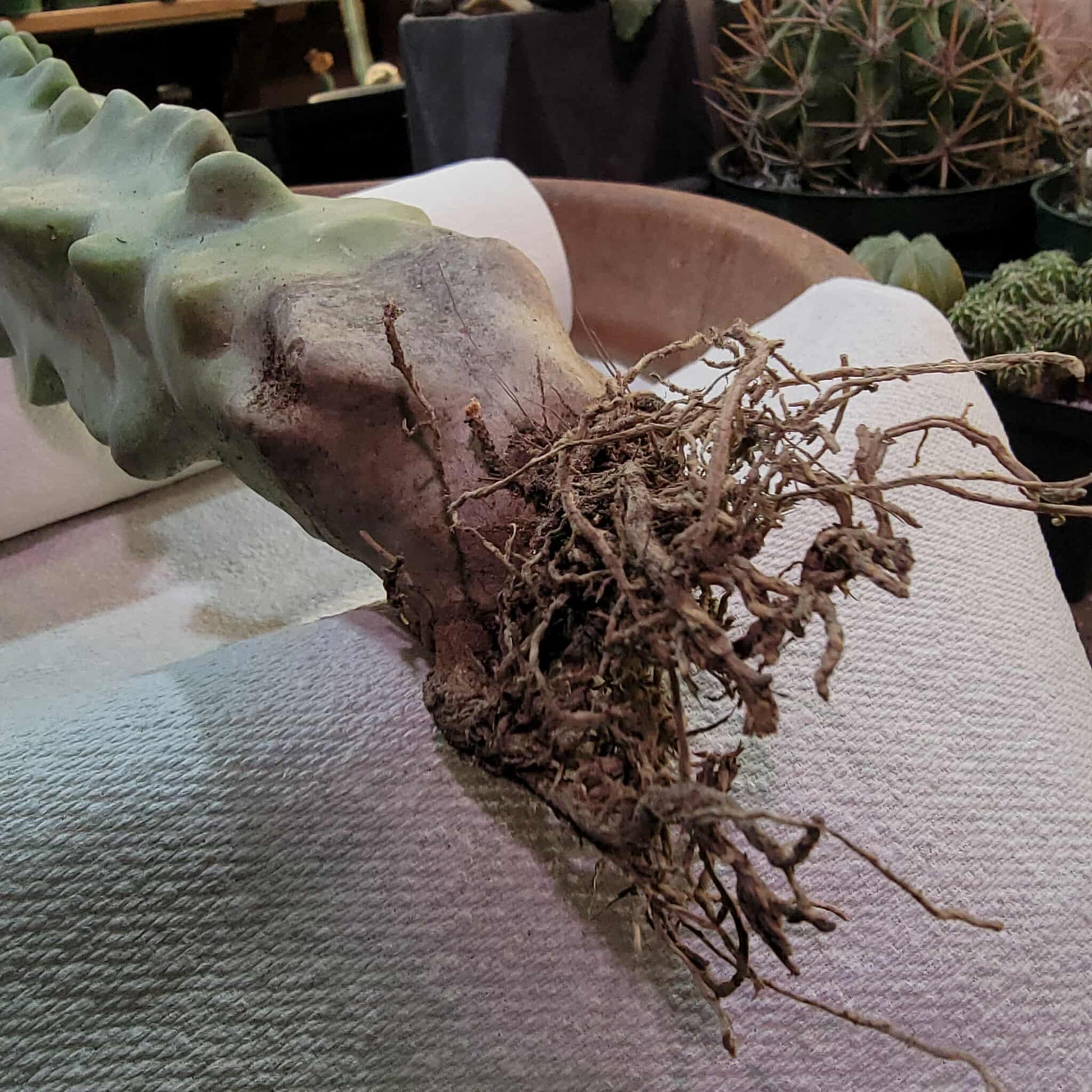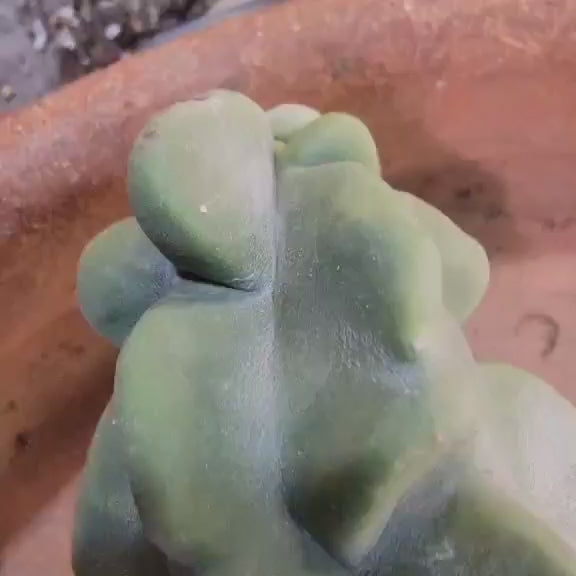Shangri-Ha Cactus Ranch
Lophocereus schottii var. monstrose - Totem Pole Cactus - 14 in.
Lophocereus schottii var. monstrose - Totem Pole Cactus - 14 in.
Couldn't load pickup availability
Lophocereus schottii var. monstrose
You will receive a large, fat specimen similar to the one shown here.
Measures 14" tall above the soil line.
Showcased here in one-of-a-kind handmade pottery (sold separately).
Roots as shown.
Will be shipped bare root.
Lophocereus schottii var. monstrose, also known as the Totem Pole Cactus, is a striking and unique cactus prized for its unusual appearance. It's a natural mutation of the Senita cactus (Lophocereus schottii).
Characteristics:
- Appearance: This cultivar is characterized by its bumpy, knobby, and spineless columnar stems. Instead of typical branching, it often grows in a single elongated column. It can have a light gray to bluish-green color. Some forms have irregularly shaped ribs with tubercle-like swellings.
- Size: Totem Pole Cacti are slow-growing. Indoors, they can reach 8 feet tall and 4 feet wide, while outdoors they can reach up to 20 feet tall. They grow slowly, typically increasing their height by about 3 inches per year.
- Flowers: The Totem Pole Cactus rarely flowers and is often sterile. When it does bloom, it produces light pink blossoms at night during late spring.
- Toxicity: The Totem Pole Cactus is generally not considered toxic to dogs.
Care:
- Light: Prefers full sun, needing at least 6-8 hours of direct sunlight daily. If growing indoors, a south-facing window is ideal, or supplemental lighting may be needed.
- Water: It's important to allow the soil to dry out completely between waterings. Overwatering can be detrimental, leading to root rot. Use a well-draining soil mix designed for cacti and succulents.
- Soil: Requires well-draining soil, such as a cactus mix. A rocky or gritty soil is also suitable.
- Temperature: Tolerates temperatures down to 25°F for short periods. For optimal growth, maintain indoor temperatures around 70-80°F. Outdoors, it thrives in USDA zones 9-11.
- Propagation: Can be propagated from stem cuttings. Allow the cut end to callous for several days before planting in gritty soil.
- Fertilizer: Fertilize during the growing season (spring and summer). Use a cactus fertilizer, but avoid over-fertilizing. A slow-release fertilizer high in potassium and low in nitrogen is a good choice.
In the Wild:
- Origin: Native to southern Arizona and northwestern Mexico, particularly Baja California and Sonora. The Monstrose form is found in specific areas of the Baja California peninsula.
- Habitat: Grows in alluvial plains with dry, gravely soils and in desert riparian environments. The Monstrose form is found in soft, sandy, and gravely soil.
- Reproduction: In the wild, it mainly reproduces asexually through stem dispersal by wind breakage and floods.
- Mutualism: The Senita cactus (the non-monstrose form) has a mutualistic relationship with the senita moth, which pollinates the flowers and whose larvae feed on the fruit.
The Totem Pole Cactus is a popular choice for cactus enthusiasts due to its unique appearance and relatively low maintenance. It can be grown in containers, rock gardens, or xeriscape landscapes.
